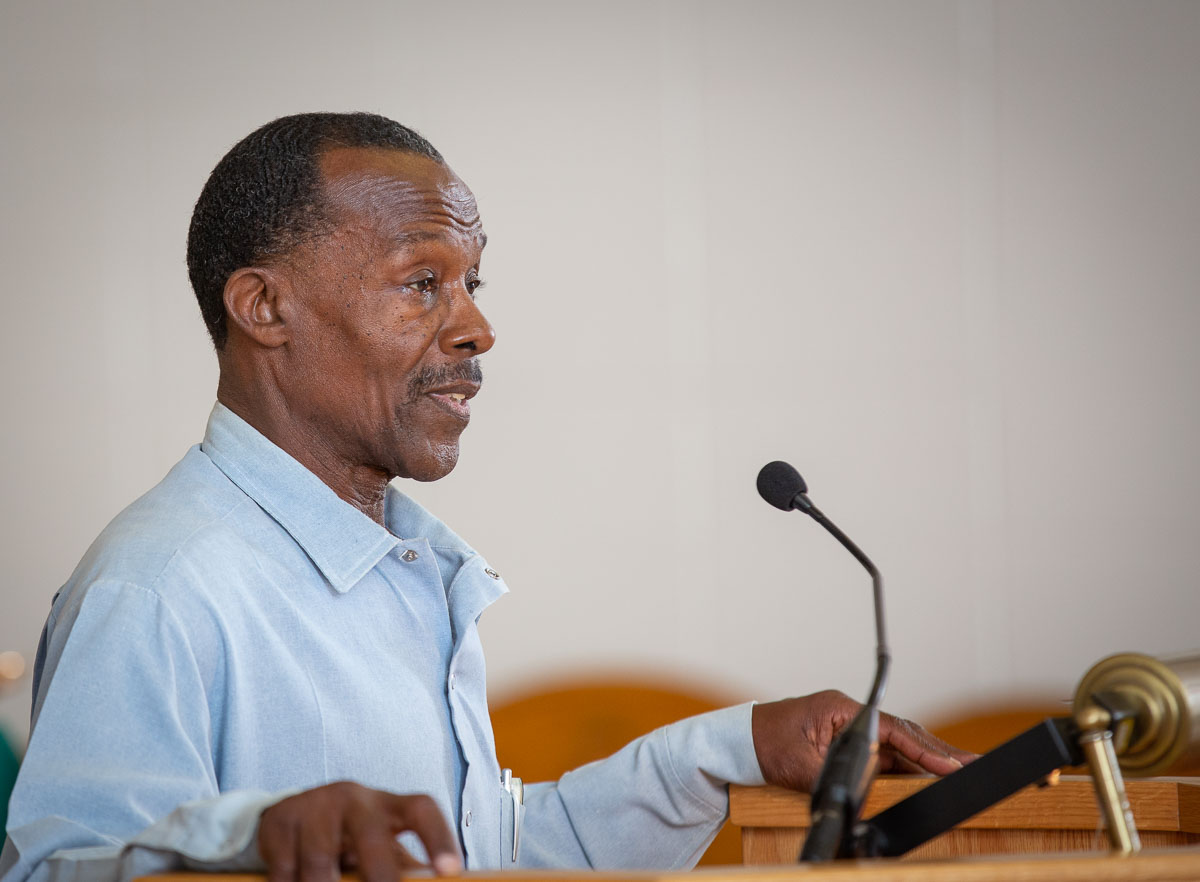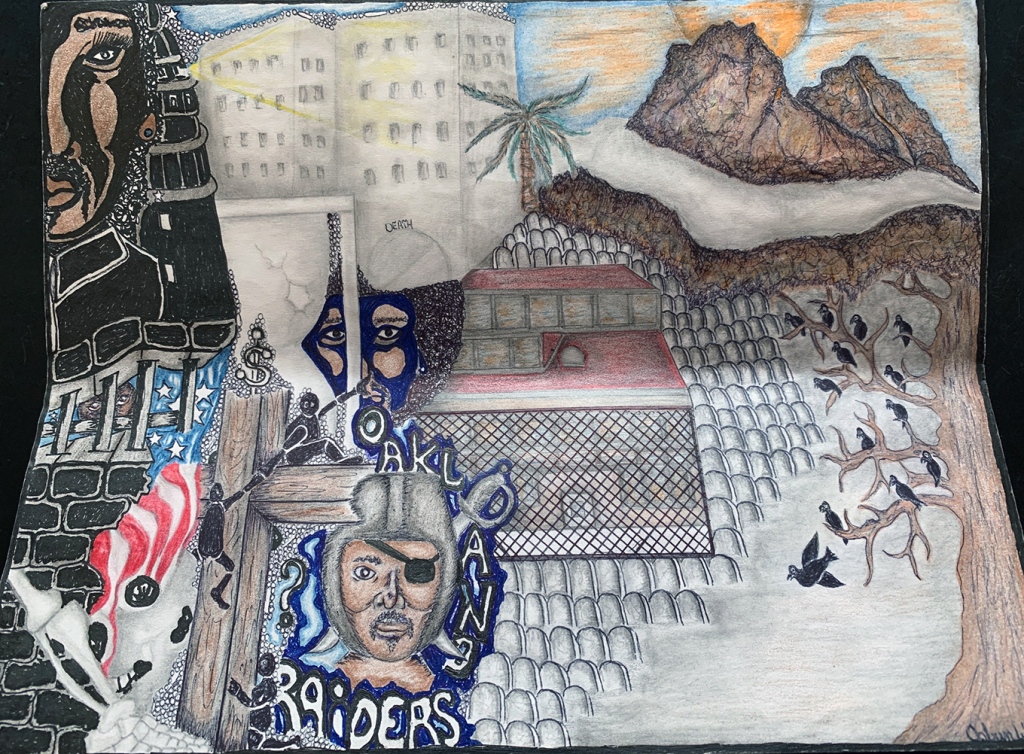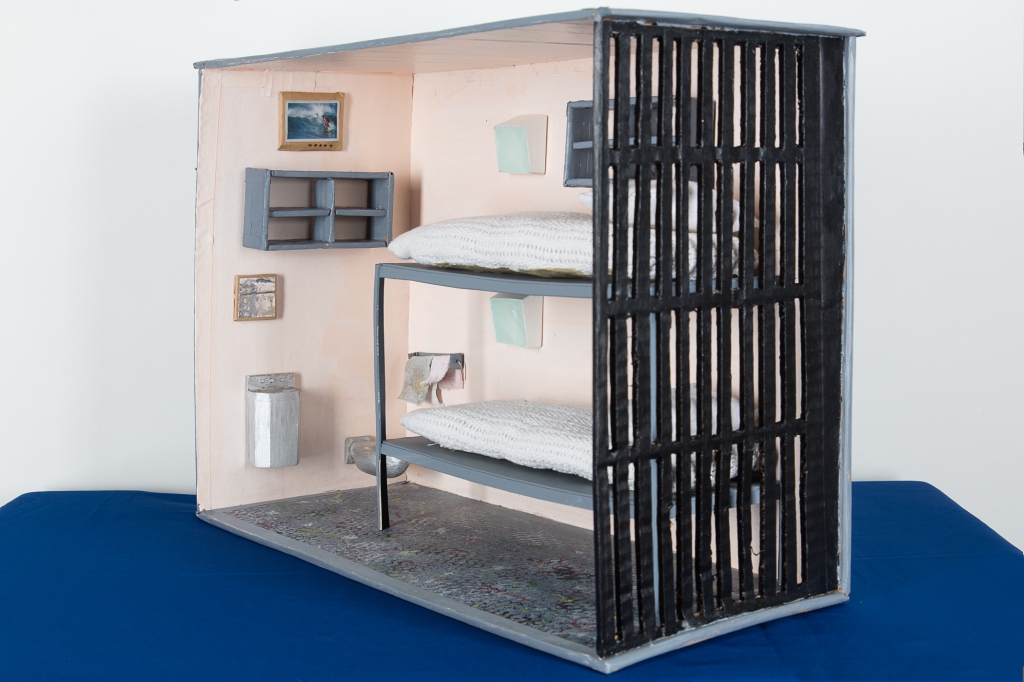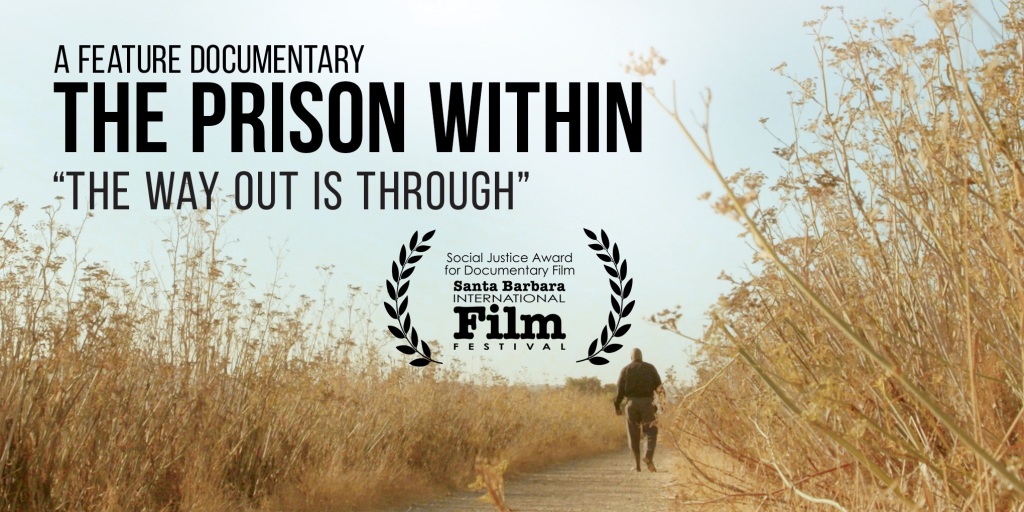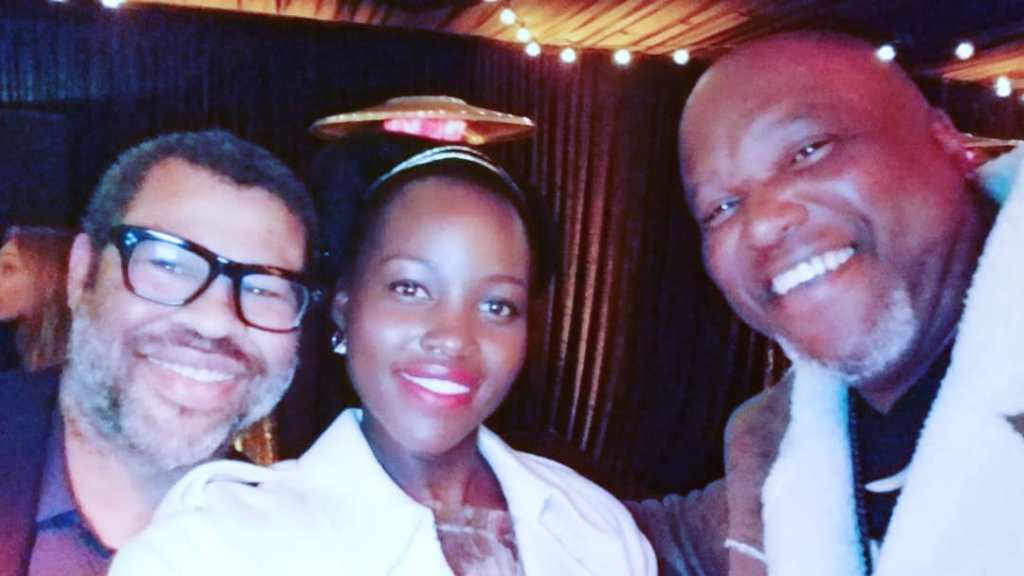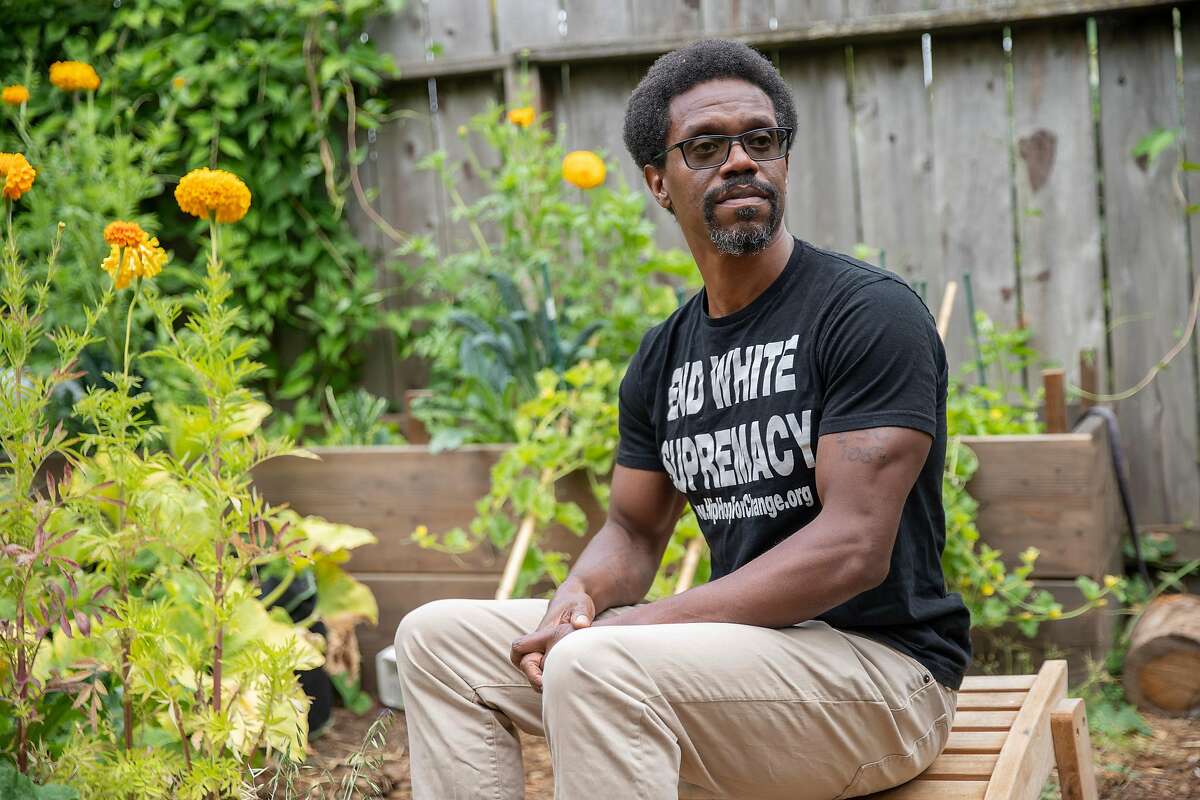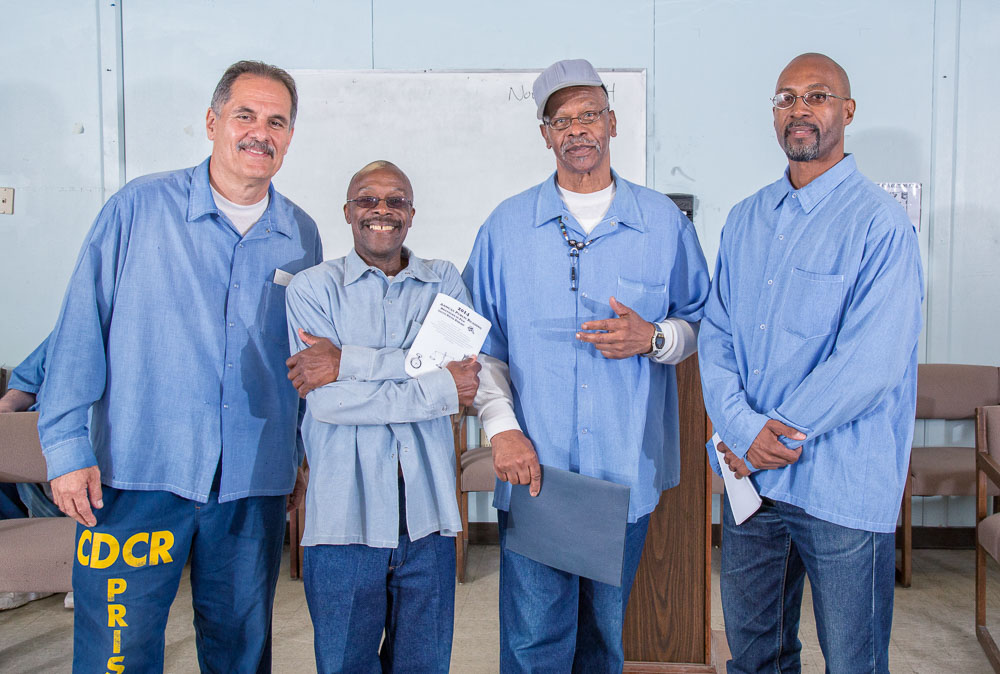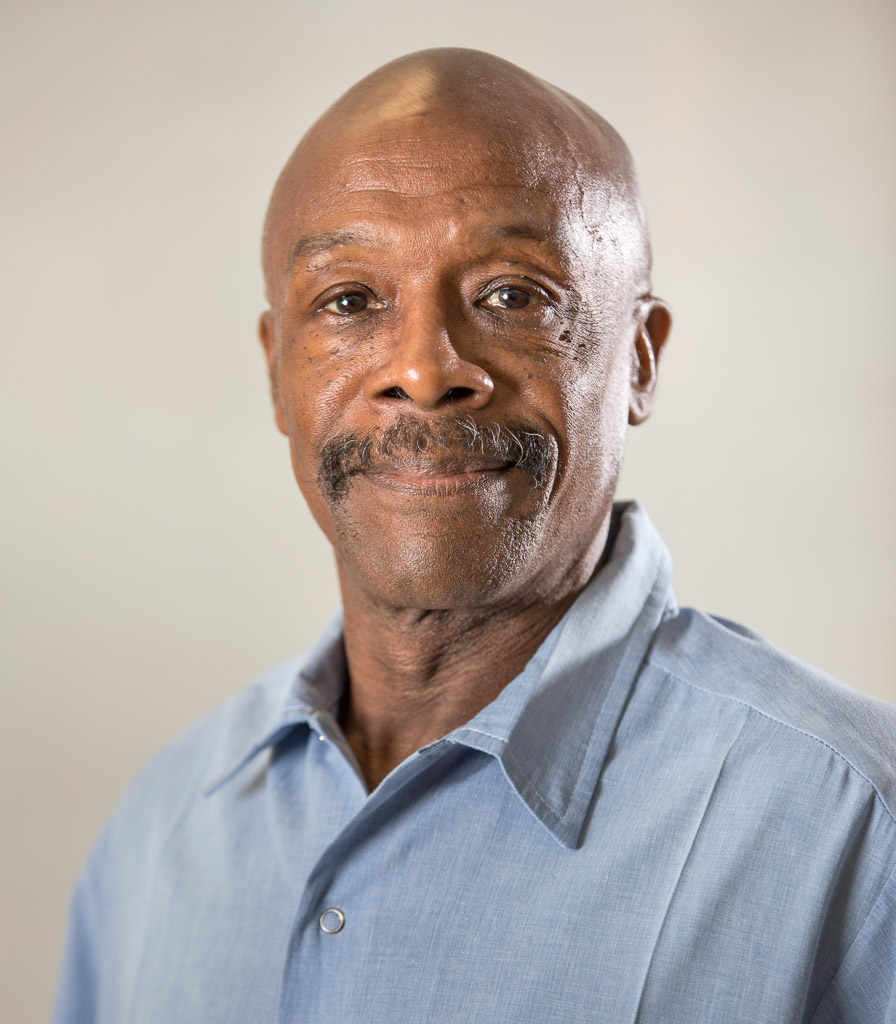
Front row, l to r: Marcus Eugene, Bruce Davis, Juan Haines, Zoe Mullery, Todd Winkler, Jeffry Covarrubias, Laurie Brooks
Second row: Troy Williams, Joshua Strange, Osbun Walton, Kelton O’Connor, Michael Zell, Elton Kelley, Paul Stauffer, Jim Bottomley
Back row: Stu Ross, Felix Lucero, John Neblett, Henry Frank, Micheal Yahya Cooke, Kevin Sawyer, Joe Krauter, Mesro Coles-El.
A lockdown drop-kicked our big event, which had been scheduled in May, into the future. July 7, 2023, finally crossed the time-threshold and our long-awaited day arrived. We had over 50 outside guests, including seven former class members, coming back in to San Quentin—some coming back for the first time, some brought to tears in the reunions and reconnections of deep friendships left behind.
Seventeen five-minute stories were read by seventeen writers. This year’s reading was a little different than what we’ve done before. About half of the writers decided that they wanted to write to a group prompt, which gave rise to a connected set of stories of pride, betrayal, dignity, and lost and found humanity, with plot twists and character development borne of intense dramatic moments. Here is the prompt they created:
“A 767 passenger plane with some notorious incarcerated people aboard are on their way to Guantanamo Bay, Cuba to spend the rest of their sentences. A sudden volcanic eruption from an uncharted island causes the plane to crash on the island. Some possible avenues to explore: What happens to the power dynamic between correctional officers and incarcerated people in a crash situation? What does the public think about the crash? What of the survivors? Will humanity overshadow the need to control or the desire for revenge? What happens to the ideas of power, control, and confinement in a survival situation?”
The rest of the writers wrote on subjects as varied as conjoined triplets, a prison baptism, South Africa’s Truth and Reconciliation Commission, childhood bullies, childhood gardens, frog’s legs, horse racing, and a commentary on a movie review of Love Actually.
Here’s the playlist of stories from our day:
Captain Shire ………………………………………………………… Mesro Coles-El
Symbolism……………………………………………………………… Paul Stauffer
The Collision………………………………………………………….. Steve Drown
The Lambardini Brothers…………………………………………Elton Kelley
Welcoming Party…………………………………………………….. Marcus Eugene
Unlawful Flight………………………………………………………. Kevin D. Sawyer
An Innocent Monster………………………………………………..Raheem Ballard
The Menu……………………………………………………………… Todd Winkler
INTERMISSION
The Garden …………………………………………………………… Joshua Strange
Three Heads Are Better Than Two……………………………Michael Zell
Truth and Reconciliation: A True Story of South Africa. C.K. “Clark” Gerhartsreiter
All Your Money ……………………………………………………… James Bottomley
My Tears are Constant …………………………………………….Osbun Walton
Charles………………………………………………………………….. Kelton O’Connor
Saved from the Creek …………………………………………….. Bruce Davis
Love Actually ………………………………………………………… Stu Ross
My Baptism …………………………………………………………… Juan Moreno Haines
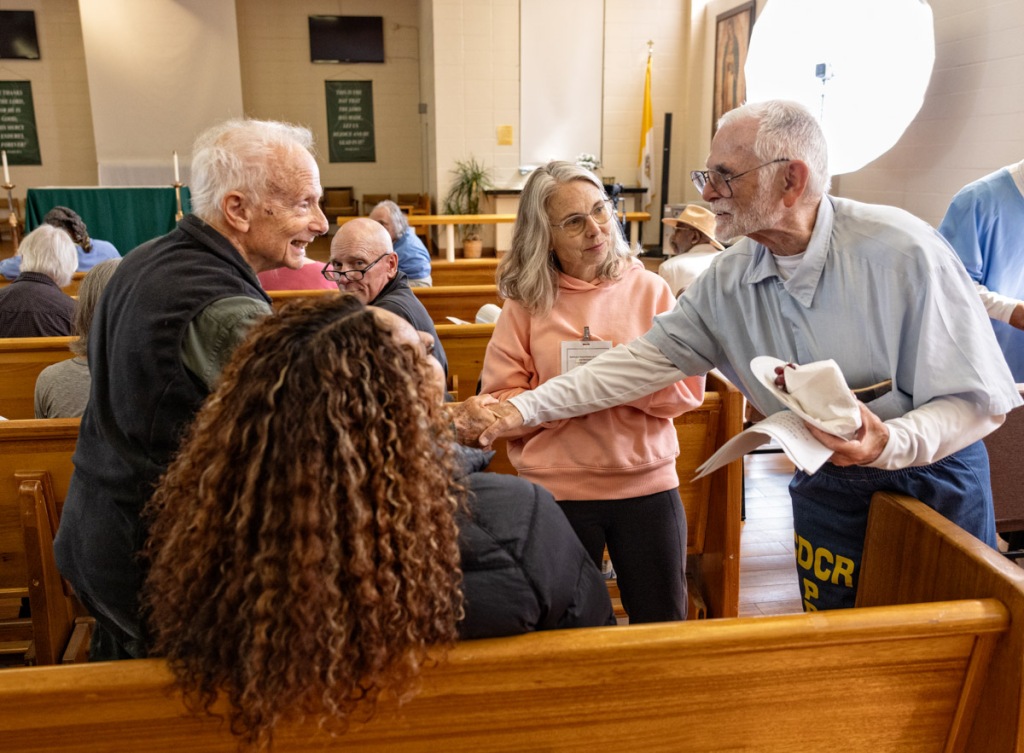
We were so blessed, as we have been in the past, to have the photographer Peter Merts documenting the event and taking portraits of the writers. You can see all his photos from the day HERE. (Peter has been documenting Arts-in-Corrections / William James Association programs in California prisons for many years; there is a beautiful book of his photos.) I’m going to share a representative bunch here, but you should really click on the link and look at them all to get a fuller sense of this satisfying day.

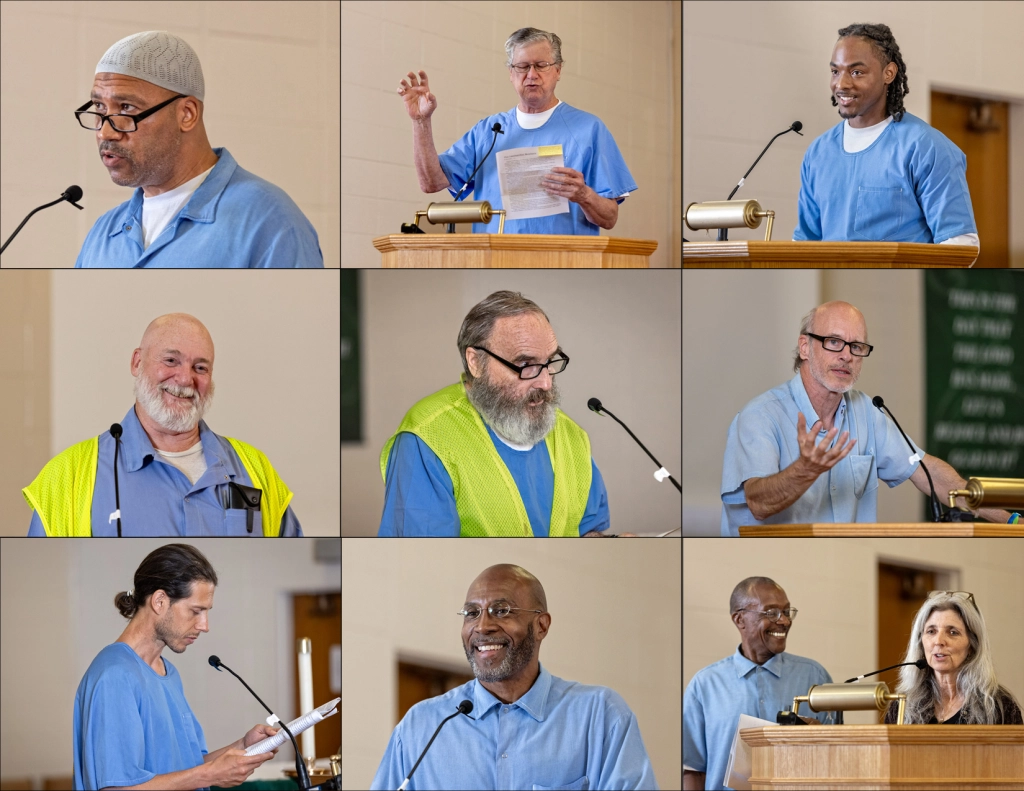
Middle: Paul Stauffer, Jim Bottomley, Stu Ross.
Bottom: Kelton O’Connor, Kevin Sawyer, Juan Haines and Zoe Mullery (photos by Peter Merts)
It’s not just the stories but also the hobnobbing, mingling, fraternizing, chopping it up, rubbing elbows, shooting the breeze, whatever you want to call it that happens before we start, at intermission, and afterwards. This is sometimes where the real event happens.
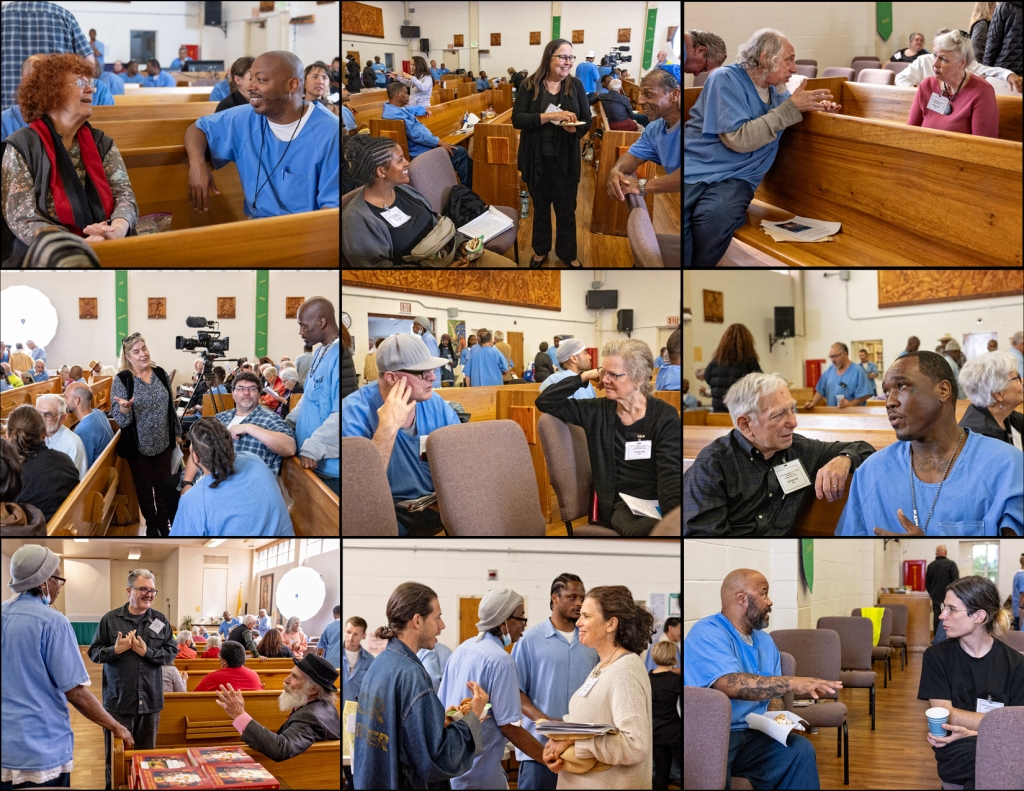
It might seem like a small thing, but good snacks make everyone more cheerful.
The presence of so many former members of the class / Prison Arts Project added lovely breadth and depth. The general good will, accomplishments, encouragements, and passionate motivations of those alums who came in were monumental. It was good to hear a bit from each of them: Micheal Yahya Cooke, Joe Krauter, Troy Williams, Felix Lucero, John Neblett, Henry Frank, and Jimmy Carlin. There were also a few who we’d expected but weren’t able to make it in: Rahsaan Thomas, Watani Stiner, Kenny Brydon, and Lawrence Pela. The numbers are growing of Brothers Out of the Pen.
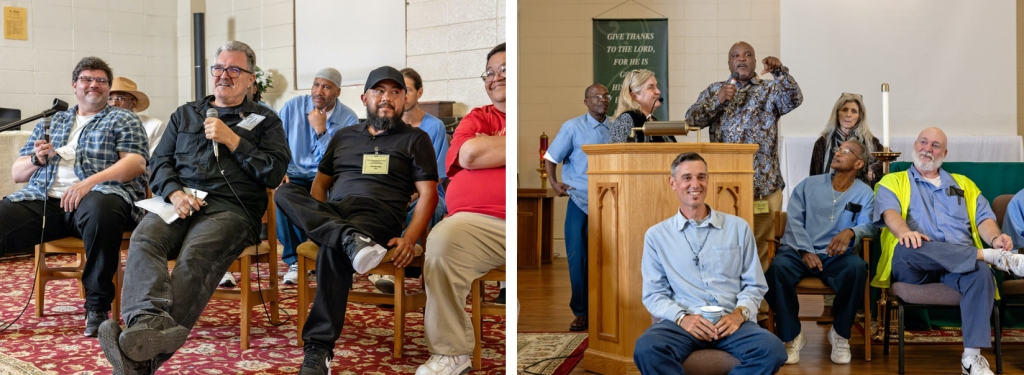

I’m so thankful for the William James Association and the fierce work it has done to hold space for programs like this over many years, through thick and thin. I’m coming up on 25 years teaching at San Quentin, and the longevity and continuity of such a long run brings a slow, deep flow that you can’t make happen fast. I’ve now known some Brothers in Pen for over twenty years. Some current writers have been in the class for ten, thirteen, fourteen years. That nurtures a trust, a camaraderie, a connection that is hard to name but surely valuable beyond measure. My profound gratitude to Laurie Brooks, executive director of the William James Association and tireless advocate for the arts in prison, and to Carol Newborg, Prison Arts Project Program Manager at San Quentin, who has the magic touch that keeps it all going there.
I know this post is getting long, but I have one more thing to add. Our last reading was on February 1, 2020, right before It happened. We had no idea what we were on the brink of. We had a beautiful day then too (though Peter Merts was not able to come in and document it, so we have no photos of the event). I took a photo before we went in of a gaggle of former members of the class, but I never posted it here, and never wrote about that event… somehow everything in 2020 got swallowed up in grief and anxiety. But I want to end this post with a tribute to that poorly documented but still briefly gorgeous day. It is good to document and remember well. And things that are less well documented are not less meaningful or important for being consigned to the fog of time. Here is to the reading we had, unphotographed, unposted, yet still carrying its value in the good nourishment it provided in that difficult year.
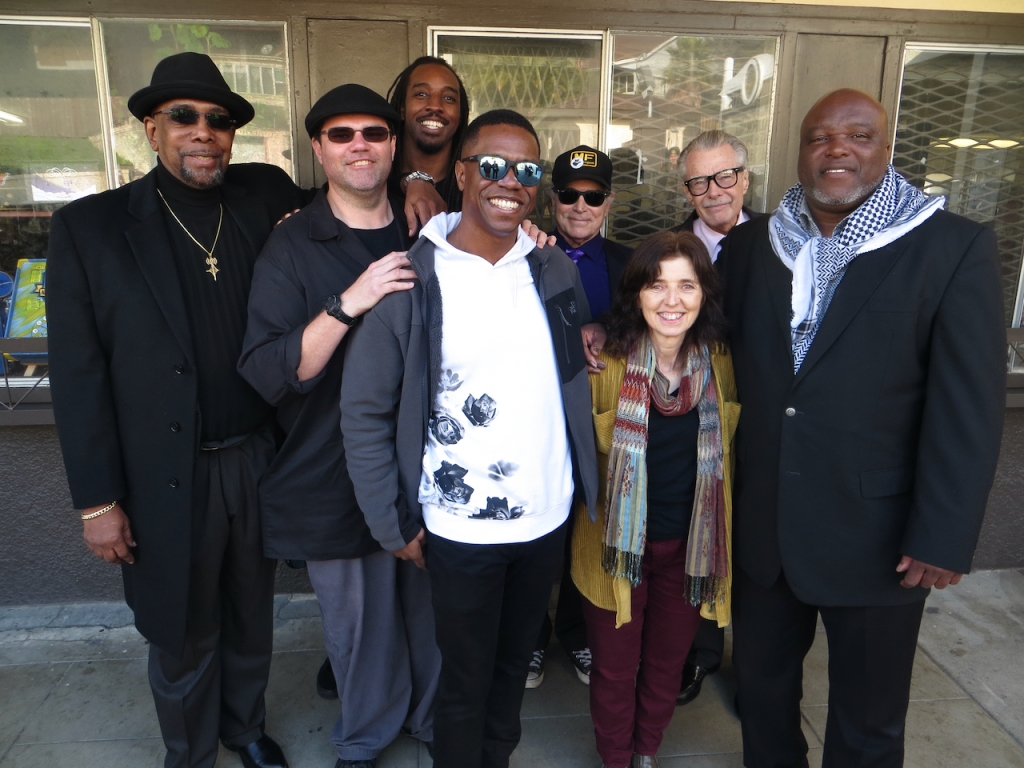
L to R: Micheal Yahya Cooke, Joe Krauter, Lawrence Udukobraye Pela, Emile DeWeaver, Jimmy Carlin, Zoe Mullery, J. B. Wells, Troy Williams
Thanks for your interest — which you must have if you’ve read this far.
Peace,
Zoe



